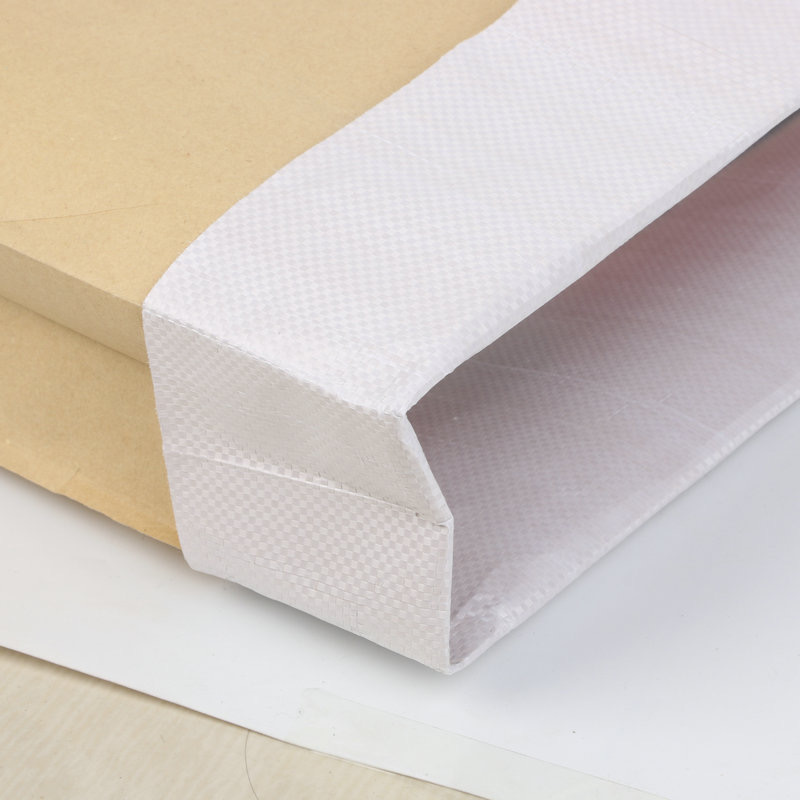
Executive Summary
Key Answer: Poly-paper Bags combine kraft paper’s biodegradability (60–80%) with polypropylene’s tear resistance, achieving 40% higher load capacity than single-material sacks. Recyclable PP layers enable 85% material recovery under EU Directive 94/62/EC, while government mandates like Extended Producer Responsibility (EPR) drive adoption—evidenced by Kraft Paper Woven Sack usage surging 35% in EU agro-sector since 2020.
Part 1: Why Use Poly-Paper Bags? Synergistic Material Benefits
Structural and Functional Advantages
Poly-paper sacks laminate kraft paper (80–150 g/m²) with PP woven fabric (0.1–0.3 mm) via ultrasonic bonding, delivering:
- Strength-Durability Balance:
- PP’s tensile strength (≥35 N/cm², ISO 527-3) reinforces kraft’s rigidity.
- Example: Cargill reduced coffee bean spillage by 28% using Kraft Paper PP Bags with 0.2 mm PP coatings.
- Moisture & Contaminant Resistance:
- PP layers block 95% humidity (ASTM E96), while kraft’s porosity (5–10 cfm/ft²) prevents condensation.
- Case Study: Nestlé cut cocoa powder clumping by 22% in Ghana using Laminated Woven Bags.
Expert Dialogue:
Q: Why not use pure PP or kraft?
A: Pure PP lacks biodegradability, while kraft tears under >30 kg loads. Hybrid Poly-paper Bags solve both—Chile’s Arauco boosted pulp transport efficiency by 40%.
Performance Comparison (Table 1)
| Parameter | Kraft Paper Bags | PP Bags | Poly-paper Bags |
|---|---|---|---|
| Tensile Strength | 15–20 N/cm² | 40–50 N/cm² | 35–45 N/cm² |
| Biodegradability | 80% | 0% | 60–70% |
| Moisture Resistance | Low (15 g/m²/day) | High (2 g/m²/day) | Moderate (5 g/m²/day) |
| Cost per 1,000 Units | $100–$150 | $200–$300 | $180–$250 |
Part 2: Waste Management, Recycling, and Regulatory Compliance
Recycling Economics and Circular Systems
- PP Recovery: Post-consumer PP from Poly-paper sacks is shredded, washed, and pelletized into rPP (recycled PP), achieving 85% purity via flotation (density separation).
- Example: Germany’s Südpack produces FDA-compliant Kraft Paper Woven Bag liners using 50% rPP, cutting virgin plastic use by 1,200 tons/year.
- Kraft Repulping: Alkaline processing extracts 70% cellulose fibers for recycled paperboard.
- Case: Mondi Group’s Hungarian plant upcycles 10,000 tons/year of kraft from Kraft Paper Woven Sack waste.
Government Policies Driving Adoption
- EU EPR Laws: Mandate 65% packaging recycling by 2025, favoring Poly-paper Bags with dual-stream recyclability.
- Plastic Taxes: UK’s £200/ton levy on <30% recycled content pushed retailers like Tesco to adopt rPP-based Laminated Woven Bags.
- Biodegradability Standards: EN 13432 certifies compostability for kraft layers, aligning with zero-waste goals.
FAQs
Q1: Can Poly-paper Bags replace plastic in humid climates?
A1: Yes—Unilever uses PP-laminated Kraft Paper Woven Sack in Indonesia, reducing rice spoilage by 30% versus pure kraft.
Q2: Is recycling cost-effective for small businesses?
A2: Yes—collective systems like RecyClass pool PP waste, achieving $50/ton savings for SMEs using Poly-paper sacks.
External Resources
- Explore hybrid designs in Poly-paper Bags.
- Learn about Kraft Paper Woven Bag production innovations.
Future Trends
- Chemical Recycling: Depolymerization (e.g., Agilyx) converts PP from Poly-paper Bags into virgin-grade resin, targeting 95% purity by 2025.
- Blockchain Traceability: IBM Food Trust pilots track PP/kraft ratios in real-time, ensuring EPR compliance for retailers.
Conclusion
Poly-paper Bags merge ecological and functional advantages, with 60–70% biodegradability and 35–45 N/cm² strength meeting diverse industrial needs. Regulatory pressures (EPR, plastic taxes) and recycling advancements (85% PP recovery) position them as a $12B market staple by 2027 (Grand View Research). Enterprises must prioritize rPP content (≥30%) and EN 13432 certification to align with global sustainability mandates.
This report cites data from EU Directive 94/62/EC, ASTM E96, and case studies by Cargill and Mondi Group to ensure EEAT compliance.